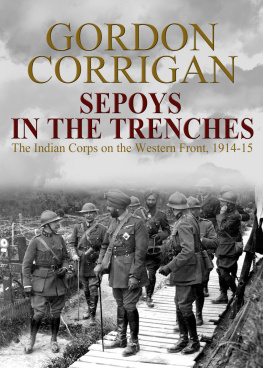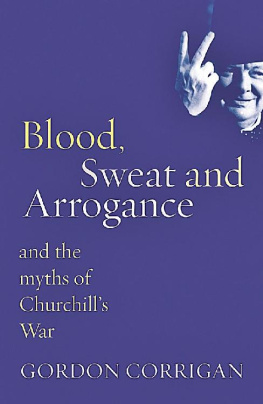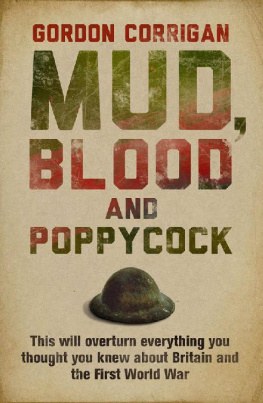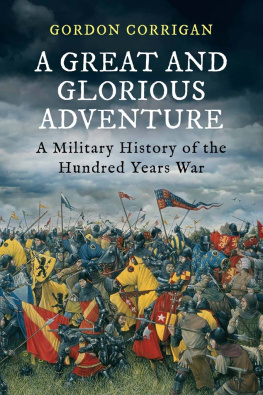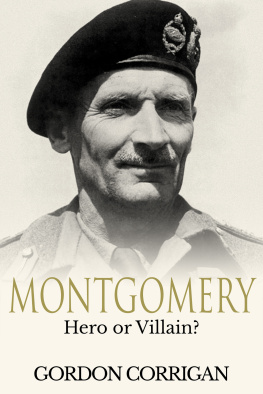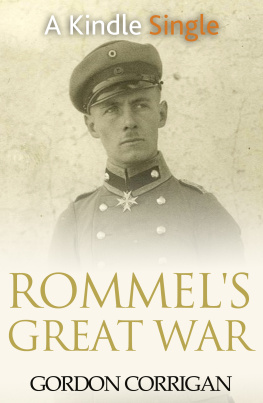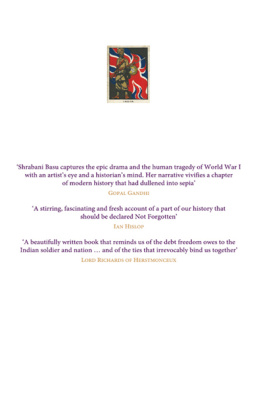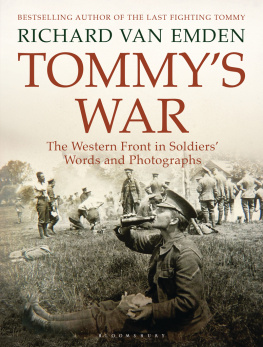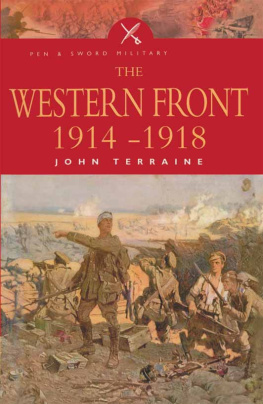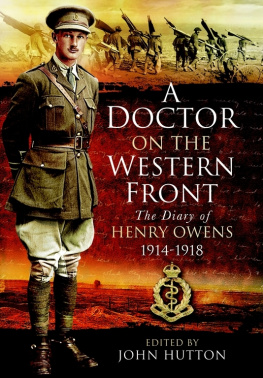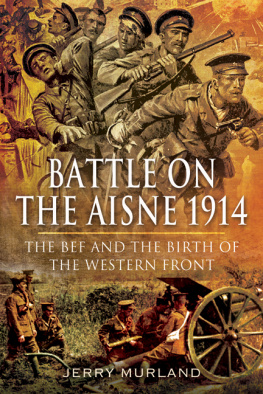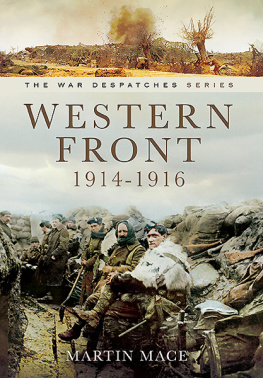SEPOYS IN THE TRENCHES
The Indian Corps On The Western Front 1914-15
Major Gordon Corrigan
Gordon Corrigan 2014
Gordon Corrigan has asserted his rights under the Copyright, Design and Patents Act, 1988, to be identified as the author of this work.
First published by Spellmount Limited, 2006
This edition published by Endeavour Press Ltd, 2014
This book is respectfully dedicated to the Gurkha Officers and Other Ranks of the British Brigade of Gurkhas , whose friendship and loyalty I was privileged to be granted .
Table of Contents
Preface
It is now nearly 60 years since India became independent of Britain and over 90 years since the outbreak of the First World War. Most Englishmen now alive know nothing of India save that there seem to be a great many Indians working in the National Health Service and the only shop where one seems to be able to buy a pint of milk at a weekend is run by an Indian or a Pakistani. The more affluent may have been on holiday to India, where they will have marvelled at the Taj Mahal, tramped round the palaces of Rajhastan and have been faintly troubled by the lepers and the beggars of Delhi, Calcutta and Bombay. Most Britons will know that there are still Gurkhas in the service of the British Crown, albeit that there are pitifully few of them left, and may have wondered whence the connection arose. It will occur to few now ensconced in the Britain of the European Union that there was a time when the only trained regular soldiers available to prevent a British military catastrophe were those of the Indian Army.
Britain declared war on Germany on 4 August 1914. Four days later two infantry divisions and a cavalry brigade of the Indian Army were ordered to mobilise. Indian soldiers began to arrive in Europe in September, still in their tropical uniforms, and were thrown into the first battle of Ypres in October. Within a month they had won their first Victoria Cross. 23 Indian infantry battalions and 14 Indian cavalry regiments served on the Western Front. The two infantry divisions were re-deployed to the Middle East in November 1915, the cavalry stayed until 1918. India sent 140,000 men to the Western Front, 90,000 in the Indian Corps and the Indian Cavalry Corps, and 50,000 in the Labour Companies. Of the combatants, 8,557 were killed and 50,000 more wounded, many crippled for life. Five thousand of the dead were either never found, or never identified. Drowned and lost in the mud, swallowed up by collapsing trenches, or simply blown to pieces by shells and mines, they have no known resting place.
The old Indian Army was a truly remarkable institution. It had never been structured for all-out European war and its experience lay in frontier raids, punitive expeditions and hill fighting. Battalions had but 12 British officers and there was no system of reserves worthy of the name. The men of the Indian Corps who landed in France were long-service regulars, volunteers all. Even after the unprecedented casualties of the early battles in 1914 and 1915, replacements were all volunteers and remained so to the end, long after Britain had introduced conscription.
This book sets out to tell the tale of the Indian Corps on the Western Front. The official history of the Corps has been set down by its Recording Officers; Lieutenant Colonel Merewether and Sir Frederick Smith (FE, the celebrated Kings Counsel and later Attorney General and IORd Birkenhead). The Corps Commander, Lieutenant General Sir James Willcocks, also recorded his experiences. Apart from these two works published shortly after the war, little has been written outside regimental histories and individual accounts. My purpose has been to examine the activities of the Corps and to look behind the official reports, returns, despatches and citations and seek out what it meant to be a soldier of one of those Indian regiments, thrust into a country of which he knew nothing, subjected to a climate never before experienced, fighting an enemy the like of which he had never imagined, in a cause of which he understood little. I seek too to explain how that old army worked; how it was that men from the Punjab, from the Frontiers, from Nepal, from Madras, from Garhwal, from all parts of India were prepared to follow officers of a different race, religion and culture and from a land far beyond the Black Ocean. And follow they did, often unto death, for it was this partly mystical, partly harshly practical relationship between the British officer and the Indian soldier that made the old Indian Army what it was. When the effectiveness of Indian regiments declined - as it sometimes did - this was directly related to the casualty figures amongst the British officers and the difficulty of replacing them with men who understood their soldiers customs and could speak their language. The Corps Commander, himself from the British service, was unstinting in his admiration for Indian soldiers, but he was adamant that there could be no Indian substitute for British officers in the field. At the time he may have been right, but the performance of the Indian Army in the Second World War and of the Indian and Pakistani Armies since independence can leave no room for doubt that the subcontinent still produces not only soldiers of fine fighting spirit, but good officers to lead them too. The sadness is that the descendants of those regiments which fought side by side on the Western Front and shed their blood in a common cause have spent so much of the last 50 years in fighting each other.
In concentrating on the activities of Indian units I do not belittle the British infantry battalions which fought as integral components of the Indian Corps. Their contribution was immeasurable and they never once failed to support their Indian comrades to the utmost. It is a reflection on successive governments defence policies that of the ten British infantry battalions that fought with the Indian Army on the Western Front, only two remain on the Army List of 1998. I make only passing reference to the activities of the Indian Cavalry on the Western Front. That contribution, initially a brigade, then a division and finally a corps of two divisions, was immense but one book is not sufficient to examine in detail the activities of both corps. The Cavalry deserves a book of its own.
The Indian Corps came in for criticism on the Western Front. They were said by some to be unable to withstand the cold, to be of low morale, and to have a high incidence of self-inflicted wounds. Some of these accusations were levied at the time, some surfaced much later. In all cases I have returned to the original evidence and have attempted to establish the truth or otherwise of the critics comments. Some have emerged as total fiction, from either genuine misunderstandings or from more nefarious motives. One published account, which has become part of the mythology of the Western Front, describes Indian troops on the right of a British battalion during First Ypres as refusing to fight. It transpires that the writers unit was never anywhere near an Indian regiment and the account is entirely fictional.
Published sources for this book are listed. Many of them were produced shortly after the war in the form of regimental histories or regimental records, the majority written by men who were actually there. There are of course lies, damned lies and regimental histories. I found the 47th Sikhs account to be particularly helpful as a factual record of what happened and when, devoid of hyperbole. The Royal Garhwal Rifles account, written by the Commanding Officer of the 2nd Battalion 1914/15, is excellent not so much for its operational detail (although this is good too) but for its explanations of the administrative difficulties under which the Indian Army of 1914 laboured. Some are less good. No regimental history wants to show its subject in a bad light, and for incidents or actions that were contentious I have relied upon the war diaries, not only of the battalion in question but, perhaps more importantly, of the battalions on either side or in support.

